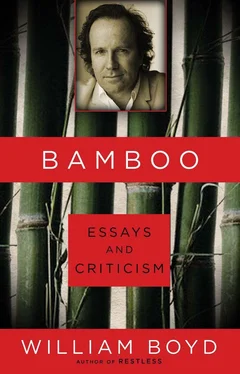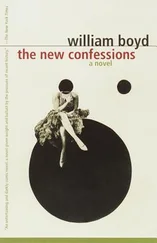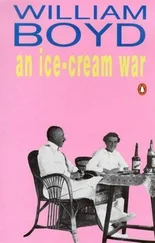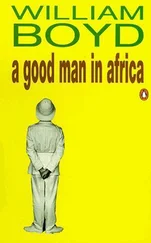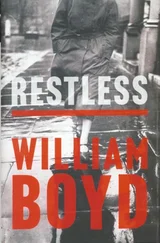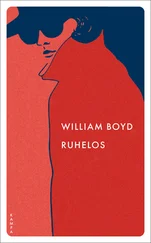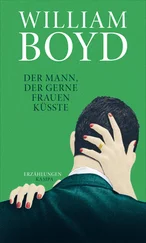In one year everything had changed; in one year the nature of film comedy had been irrevocably altered and the twentieth century had acquired a new icon. And all because of the Tramp. No one really knows how the Tramp was created, and Chaplin himself provided several contradictory versions over the years, but the fact remains that at some stage in February 1914, during the shooting of a Sennett one-reeler called Mabel’s Strange Predicament , Chaplin went down to the wardrobe shed at Keystone and emerged carrying a cane walking stick and wearing a bowler hat, a toothbrush moustache, a tight jacket, baggy trousers and oversized shoes. The Little Tramp was born.
And was an almost immediate and enormous success. Chaplin began to write and direct his own films as well as star in them. He moved into an apartment in the fashionable Athletic Club and acquired a valet as well as opened several bank accounts. He wrote to his brother Sydney, in his inimitable style, urging him to come over. “I have made a heap of good friends hear and go to all the partys etc … I am still saving my money and I have 4000 dollars in one bank, 1200 in another, 1500 in London not so bad for 25 and still going strong thank God. Sid, we will be millionaires before long.”
And he was. At the age of twenty-five, while Europe was embarking on the long agony of World War One, Charlie Chaplin from the slums of Lambeth set about mining one of the most lucrative seams in show business. Given the privations and suffering of his early life the money Chaplin made was always of vital importance to him and he was never in any doubt about what he was worth. Sydney duly came over and became his manager, and between the two of them they negotiated some of the shrewdest and most remunerative contracts in Hollywood’s history. One New York journalist observed, after Chaplin had spent a month in the city, that he “kept his bankroll exclusively to himself …never has Broadway known a more frugal celebrity.”
Chaplin could have contented himself with cranking out Keystone-style comedies, amassing his personal fortune and living the good life in the lotusland that was Hollywood, but his artistic ambitions were there from the start and always drove him on to greater challenges. He saw the huge potential of the movies at once, both as a means of mass entertainment on an international scale and also as an art form in their own right. Very soon after his initial success with the short comedies he tried his hand at a film of greater length and polemical heft— The Immigrant —the first of the series of comedies with a marked social comment that was to establish him as one of the founding geniuses of the movie industry.
Coexistent with the inexorable rise of his fame and fortune (his salary in 1918 was over a million dollars a year) his emotional life by contrast proved a far rockier business. After an affair with his leading lady in The Immigrant —Edna Purviance — Chaplin became infatuated with a smalltime teenage actress called Mildred Harris (she was sixteen years old and, as Chaplin put it, “no mental heavyweight”). This was the first of a series of disastrous liaisons with very young girls, a sexual obsession that was to dog Chaplin well into middle age, and was to provide his enemies with powerful ammunition.
Mildred became pregnant and to avoid the prospective scandal Chaplin married her. It was hardly a grand amour and what little affection Chaplin had for his bride evaporated when the pregnancy turned out to be a false alarm. As always, when his emotional life distressed him, Chaplin turned to his work. Shoulder Arms was made to boost the war effort and, in association with his old friends Douglas Fairbanks and Mary Pickford, United Artists was formed — the novel idea of a film studio controlled and run by actors that gave rise to the phrase, spoken by a disenchanted producer, that “the lunatics have taken over the asylum.” United Artists was to be another phenomenal money-spinner for Chaplin, but in the meantime the war was ending and his marriage was in ruins. Chaplin was editing his next film, The Kid , when Mildred Harris sued for divorce on the grounds of mental cruelty. It was finally granted in 1920.
In the celebrated dream sequence in The Kid a twelve-year-old child actress called Lita Grey played the part of an angel. Something about her fascinated Chaplin and he put her under contract. However, a more celebrated dalliance with the spectacularly beautiful actress Pola Negri dominated the gossip columns and there was a farcical series of on-off engagements that had more to do with enlarging Pola Negri’s public profile than any great infatuation. Chaplin was deeply embarrassed by this public speculation about his private life, and in fact Pola was not his type. It is hard to say exactly when his affair with Lita Grey began but by 1924, when she was fifteen, she had been signed up — to the dismay of his colleagues — as leading lady on Chaplin’s next big film The Gold Rush . When she signed the contract it was reported that she jumped up and down clapping her hands and crying “Goody, goody!” Lita was no star, and not much of a beauty — she was described by one journalist as a “peculiarly shy, reticent and far from loquacious girl. She seemed phlegmatic.” Chaplin’s folly was compounded in September of that year when Lita announced she was pregnant. Sexual relations with an under-age girl were regarded as de facto rape in California, a crime that carried up to thirty years’ imprisonment. The arranged marriage that followed took place covertly in Mexico. Press releases gave Lita’s age as nineteen.
Chaplin’s marriage to Lita Grey brought him two sons and a degree of misery and personal torment that almost drove him insane. In his autobiography he devotes no more than a couple of lines to the whole episode: “For two years we were married and tried to make a go of it, but it was hopeless and ended in a great deal of bitterness.” In typical consolation he concentrated on his work with demonic intensity. As soon as he finished the arduous shoot of The Gold Rush he embarked on The Circus and shortly after the completion of that film, Lita walked out with her two children. The acrimony and publicity of the subsequent divorce action — its sexual innuendo and scurrility — drove Chaplin to a nervous breakdown. His hair turned grey overnight, he would bathe repeatedly and compulsively wash his hands dozens of times a day, and at night, paranoid and suspicious, he would patrol his empty house with a shotgun. As Lita prepared to announce to the world the names of five prominent women she alleged Chaplin had slept with during their short marriage (they included Marion Davies, newspaper magnate Randolph Hearst’s mistress) Chaplin agreed to a cash settlement of $600,000. It was the largest such settlement in American legal history.
While Chaplin’s personal life reached its nadir his films and popularity seemed ever on the ascendant. After the acrimonious divorce one headline read simply: “CHARLIE IS A REAL HERO.” But at about this time, unknown to him, a new factor had entered his life that was to have profound consequences later. The FBI, under its director J. Edgar Hoover, had, since its inception, been convinced that Hollywood and the film community were a nest of vipers, of corrupt and seditious Communist degenerates who were undermining the moral fabric of the United States. The first file the FBI opened on Chaplin was in 1922, recording the fact that Chaplin had hosted a reception for a prominent labour leader. At the end of his life the full dossier was discovered to be 1,900 pages long. One report was titled “Affiliation of Charles Chaplin with Groups Declared to be Communist Subversive Groups.” Chaplin’s politics were broadly, if idiosyncratically, left wing, and he made no secret of them. But something about the FBI’s diligence in singling him out from the other “parlor Bolshevists” of Hollywood suggests a more malign vendetta, one probably inspired by Hoover himself. Chaplin and Hoover had met at a dinner early in Hoover’s career and whatever took place that night initiated a dislike and distrust that were corrosive. Chaplin, moreover, did his cause no favour, in the eyes of the righteous, by never taking up American citizenship, by being regularly engaged in tax disputes with the IRS, and in making films with a pointed humanist-socialist message. They were also convinced he was Jewish (which he was not: faced with the accusation once Chaplin replied, “I’m afraid I do not have that honour.” This did not stop the FBI from labelling his files: “Charlie Chaplin alias Israel Thon-stein.”) His Achilles heel, however, proved to be the sexual scandals he became embroiled in. Lita Grey’s bitter muck-raking set a tone of derogation and abuse that was finally to bring him down.
Читать дальше
